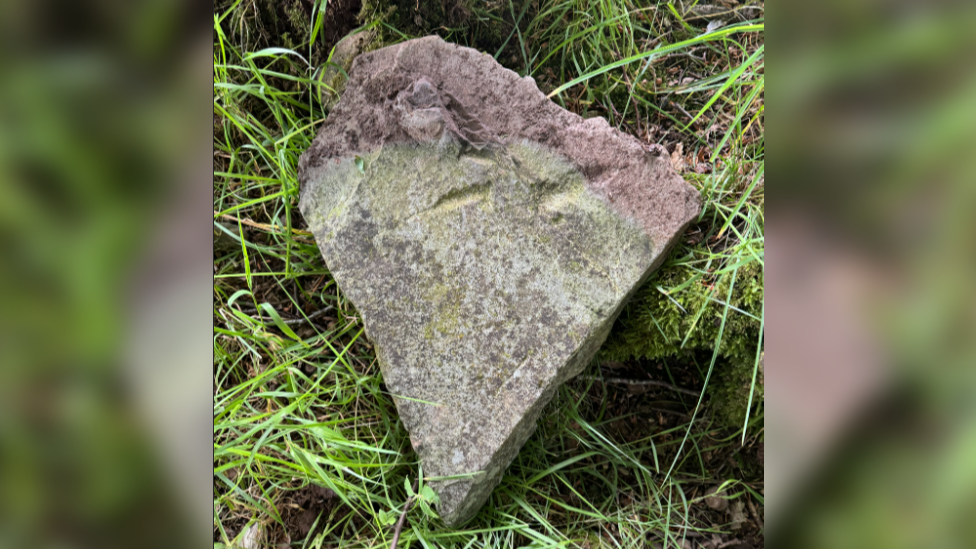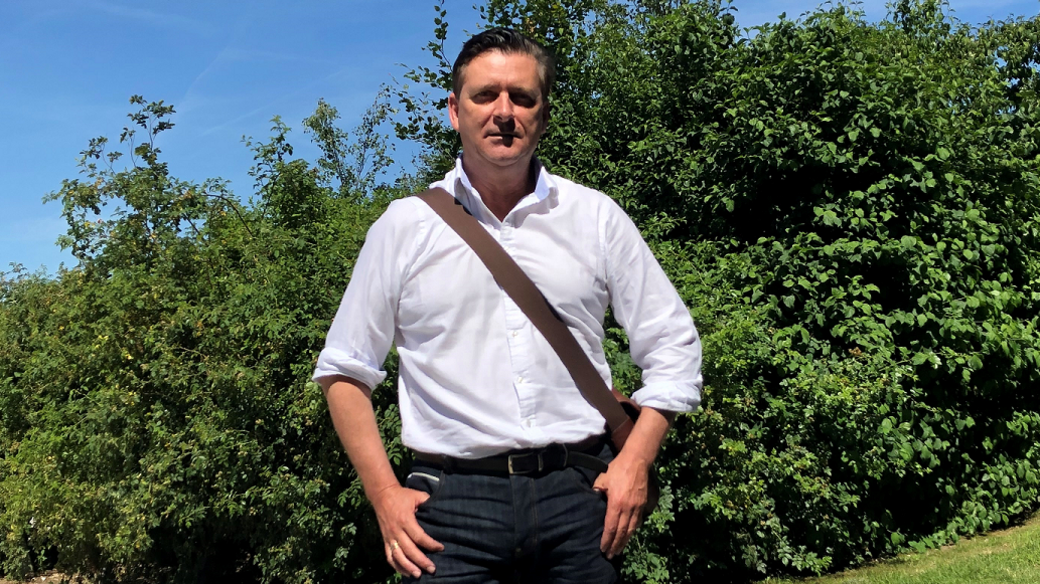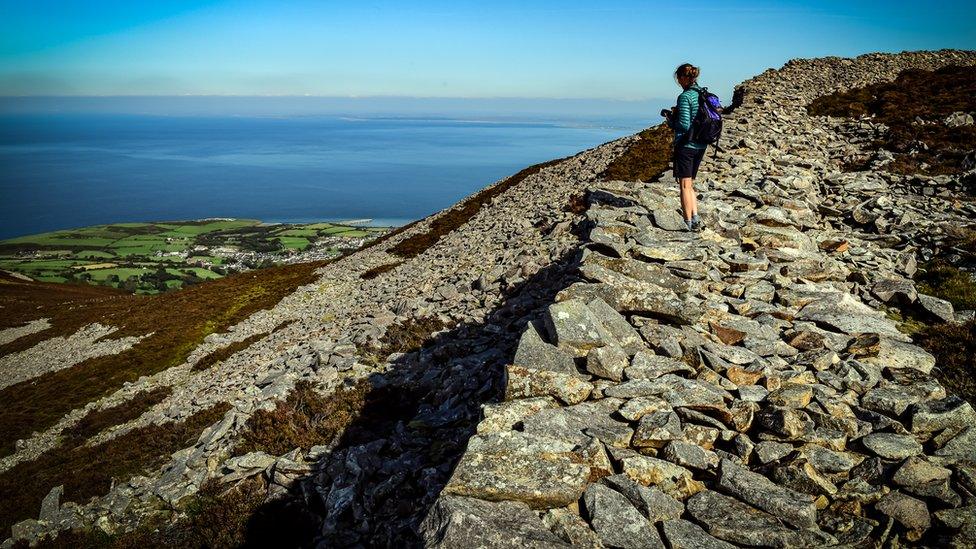New find hints Wales fully integrated into Roman Britain

Dr Merrony confirmed his suspicions of a Roman fort by looking for Roman tiling
- Published
An academic who claims to have discovered a Roman fort while out on a bike ride says his discovery indicates a more militant history for west Wales than previously thought.
He believes the site, which is located underneath a farmer’s field in the north of Pembrokeshire, suggests that Wales was fully integrated into Roman Britain.
Dr Mark Merrony, of Wolfson College, Oxford, said he was "absolutely thrilled".
"I wasn't expecting to find something like this... it's one thing finding a villa or a road, but to find a military site like this is [on] a very different scale altogether really."
Missing Roman forts and roads revealed
- Published7 June 2020
Roman ruins get CGI restoration
- Published6 August 2014
The site is believed to be two to three hectares in size and Dr Merrony said, in its prime, it would have been occupied by 500 soldiers.
He said his discovery suggested Wales was completely integrated into Roman Britain, whereas previously only two forts were known to exist in west Wales.
"There are more villas than we think and there are more forts than we think. In west Wales, I wouldn't be surprised if there were at least another two, three or more forts that we just haven't found yet.
"West Wales has been neglected, partly because there aren't the resources to cover it. So the more archaeologists start looking, the more you start to find."

Dr Mark Merrony still thinks there are forts in west Wales to discover
In order to determine whether his suspicions were right, Dr Merrony said he looked for Roman material.
"I wanted to find a particular roofing slate type, which tends to be hexagonal, with a long point on," he said.
"I thought if I find one of those, I'm going to be incredibly lucky. The challenge is the site is so overgrown, it's almost impossible to get near the place."
Dr Merrony previously discovered a Roman villa in west Wales in 2002, which inspired him to look for more sites.
He believes the fort dates back to between the first and third centuries, when the Celtic Demetae tribe inhabited south-west Wales.
This discovery means the tribe "who were thought to have peacefully coexisted with the Roman invaders, weren't probably as peaceful as we think they were," Dr Merrony added.
He said he had received some criticism from local people in the area, who believed he was "giving the game away" as to the location of the site and encouraging "treasure hunters" to visit.
"But I haven’t said where it is," he added. "They're assuming it's somewhere that it's not.
"They might find some rusty nails for the roofing slates. This is a pretty hardcore military site."
The fort now needs a series of surveys to prove its validity, including a geophysical survey and possible excavation.
Related topics
- Published10 December 2023

- Published10 August 2013